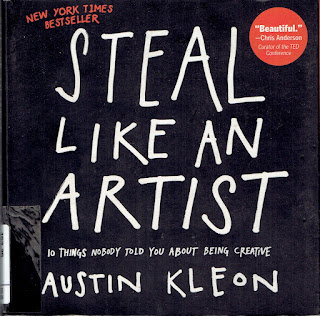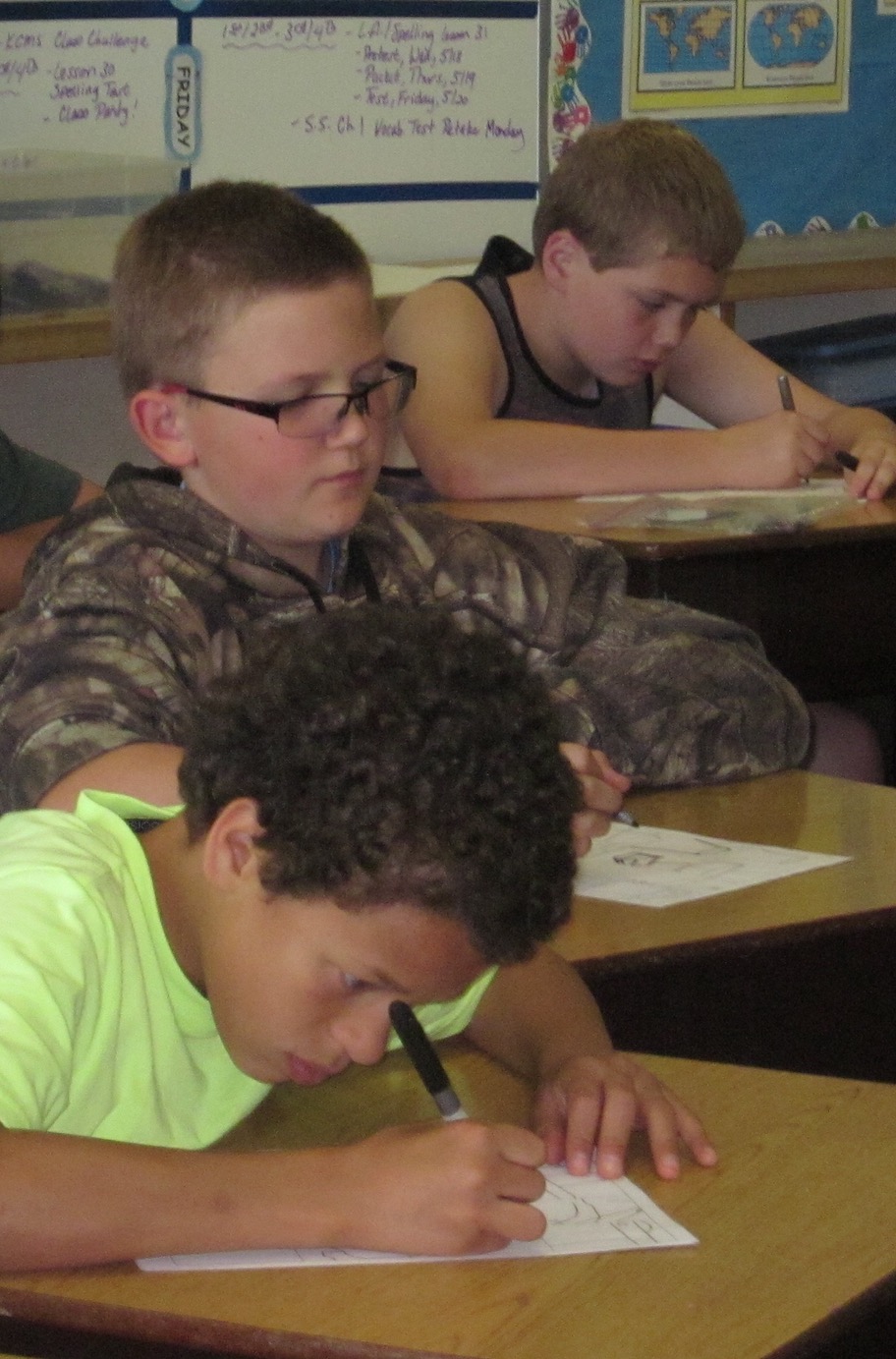Taking the First Step in Learning to be Creative
Over the a period of three weeks I’d been teaching art classes at a summer camp for 5-12 year-olds. As you might expect, teaching art to kids with that kind of age range is no easy trick. Art projects that are interesting to a 5-year-old may be boring to a 12-year-old.
The camp director told me that at his camp, kids were invited to participate, and that if they didn’t, well, that was their loss. So lack of participation from a few kids, he explained, should not bother me.
In spite of the director’s expectations, however, the whole group DID participate in the art classes, from the 5-year-olds to the 12-year-olds.

Except for one very bright 10-year-old boy.
He came to me at the beginning of the first class, saying there was something I should know about him. “I don’t follow directions in art classes. I use free form and come up with my own original ideas.”
And such was his attempt. During the first two lessons, while other kids followed instructions and drew beautiful Hungarian Bugs and nicely decorated “Plates from Nepal,” this boy did “free form.” Sadly, however, his "free form" looked more like preschool scribbles.

He hadn’t learned any discipline. Austin Kleon, the author of Steal Like an Artist, would say that he had not learned to steal. In other words, try as he might to be “original,” he never got past wallowing in his own “art” habits. He lacked the necessary input from others that enables us to be creative.
By the third week, and the third lesson, I decided it was time to help the boy. At the beginning of the class he again told me that he wouldn’t be following  instructions, and that he would be using ‘free form.”
instructions, and that he would be using ‘free form.”
“Does that mean that you lack the skill to follow directions and do a drawing?” I asked. “Drawing takes a lot of concentration. Is it too hard for you to concentrate?” That caught his attention, and made him a little angry, but he bit at the challenge. As we discussed motifs, the concept for the day, he led the class in finding motifs on objects in the room.
He drew a Japanese Goldfish with the rest of the class, and covered both the fish and the space around it with motifs. When his dad came to pick him up at the end of the lesson, his dad took a look at the paper, and exclaimed,
“YOU drew that zentangle?”
The boy responded with a swagger and an impertinent tip of his head, “No, Dad. It’s a fish. With motifs.” His fish had repeated curves, dots, and wavy lines. The surrounding “water” was covered in contrasting angular lines.
He had begun to learn the key to creativity: To be creative -
-
You start with an idea you like, and
-
Make a rehash of it, giving the original your own twist.
The two-step process also defines how an ArtAchieve art lesson is constructed. First kids carefully copy an idea, like the outline of the Japanese Goldfish or the Hungarian Bugs, and then they give the original their own creative twist.
Over the a period of three weeks I’d been teaching art classes at a summer camp for 5-12 year-olds. As you might expect, teaching art to kids with that kind of age range is no easy trick. Art projects that are interesting to a 5-year-old may be boring to a 12-year-old.
The camp director told me that at his camp, kids were invited to participate, and that if they didn’t, well, that was their loss. So lack of participation from a few kids, he explained, should not bother me.
In spite of the director’s expectations, however, the whole group DID participate in the art classes, from the 5-year-olds to the 12-year-olds.

Except for one very bright 10-year-old boy.
He came to me at the beginning of the first class, saying there was something I should know about him. “I don’t follow directions in art classes. I use free form and come up with my own original ideas.”
And such was his attempt. During the first two lessons, while other kids followed instructions and drew beautiful Hungarian Bugs and nicely decorated “Plates from Nepal,” this boy did “free form.” Sadly, however, his "free form" looked more like preschool scribbles.

He hadn’t learned any discipline. Austin Kleon, the author of Steal Like an Artist, would say that he had not learned to steal. In other words, try as he might to be “original,” he never got past wallowing in his own “art” habits. He lacked the necessary input from others that enables us to be creative.
By the third week, and the third lesson, I decided it was time to help the boy. At the beginning of the class he again told me that he wouldn’t be following  instructions, and that he would be using ‘free form.”
instructions, and that he would be using ‘free form.”
“Does that mean that you lack the skill to follow directions and do a drawing?” I asked. “Drawing takes a lot of concentration. Is it too hard for you to concentrate?” That caught his attention, and made him a little angry, but he bit at the challenge. As we discussed motifs, the concept for the day, he led the class in finding motifs on objects in the room.
He drew a Japanese Goldfish with the rest of the class, and covered both the fish and the space around it with motifs. When his dad came to pick him up at the end of the lesson, his dad took a look at the paper, and exclaimed,
“YOU drew that zentangle?”
The boy responded with a swagger and an impertinent tip of his head, “No, Dad. It’s a fish. With motifs.” His fish had repeated curves, dots, and wavy lines. The surrounding “water” was covered in contrasting angular lines.
He had begun to learn the key to creativity: To be creative -
-
You start with an idea you like, and
-
Make a rehash of it, giving the original your own twist.
The two-step process also defines how an ArtAchieve art lesson is constructed. First kids carefully copy an idea, like the outline of the Japanese Goldfish or the Hungarian Bugs, and then they give the original their own creative twist.
Over the a period of three weeks I’d been teaching art classes at a summer camp for 5-12 year-olds. As you might expect, teaching art to kids with that kind of age range is no easy trick. Art projects that are interesting to a 5-year-old may be boring to a 12-year-old.
The camp director told me that at his camp, kids were invited to participate, and that if they didn’t, well, that was their loss. So lack of participation from a few kids, he explained, should not bother me.
In spite of the director’s expectations, however, the whole group DID participate in the art classes, from the 5-year-olds to the 12-year-olds.

Except for one very bright 10-year-old boy.
He came to me at the beginning of the first class, saying there was something I should know about him. “I don’t follow directions in art classes. I use free form and come up with my own original ideas.”
And such was his attempt. During the first two lessons, while other kids followed instructions and drew beautiful Hungarian Bugs and nicely decorated “Plates from Nepal,” this boy did “free form.” Sadly, however, his "free form" looked more like preschool scribbles.

He hadn’t learned any discipline. Austin Kleon, the author of Steal Like an Artist, would say that he had not learned to steal. In other words, try as he might to be “original,” he never got past wallowing in his own “art” habits. He lacked the necessary input from others that enables us to be creative.
By the third week, and the third lesson, I decided it was time to help the boy. At the beginning of the class he again told me that he wouldn’t be following  instructions, and that he would be using ‘free form.”
instructions, and that he would be using ‘free form.”
“Does that mean that you lack the skill to follow directions and do a drawing?” I asked. “Drawing takes a lot of concentration. Is it too hard for you to concentrate?” That caught his attention, and made him a little angry, but he bit at the challenge. As we discussed motifs, the concept for the day, he led the class in finding motifs on objects in the room.
He drew a Japanese Goldfish with the rest of the class, and covered both the fish and the space around it with motifs. When his dad came to pick him up at the end of the lesson, his dad took a look at the paper, and exclaimed,
“YOU drew that zentangle?”
The boy responded with a swagger and an impertinent tip of his head, “No, Dad. It’s a fish. With motifs.” His fish had repeated curves, dots, and wavy lines. The surrounding “water” was covered in contrasting angular lines.
He had begun to learn the key to creativity: To be creative -
-
You start with an idea you like, and
-
Make a rehash of it, giving the original your own twist.
The two-step process also defines how an ArtAchieve art lesson is constructed. First kids carefully copy an idea, like the outline of the Japanese Goldfish or the Hungarian Bugs, and then they give the original their own creative twist.
 instructions, and that he would be using ‘free form.”
instructions, and that he would be using ‘free form.”


